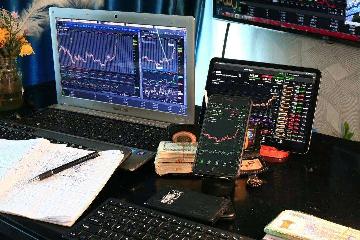What Constitutes a Heavy Position in Futures Trading?
Advertisements
- April 23, 2025
The concept of positioning in trading, particularly in futures, revolves heavily around the critical component known as the stop-lossUnderstanding where to set a stop-loss is essential, as it directly influences the overall risk an investor exposes themselves toImagine trading with a typical leverage of 10 times, where a stop-loss is set at a modest 1%. In such a scenario, taking a position that occupies 20% of the trading capital would not be considered heavy; after all, the stop-loss represents only 2% of the total fundsThis level of risk can be deemed manageable for many tradersYet, whenever the stop-loss positioning shifts, such as being extended to 10%, the same 20% position could suddenly feel much more daunting, as the prospect of losing 10% in a single trade raises significant concernsIt underscores a crucial reality: risk management is an art that requires constant adjustment.
Altering your stop-loss drastically could lead to precarious situations, particularly for long-term positions
Advertisements
Setting stop-loss boundaries that are excessively tight relative to typical market fluctuations can prove detrimentalA wrong stop-loss might not only signify an error in judgment but could also lead to a vicious cycle of lossThe value of your contracts or the number of lots traded does not hold the weighting you may believe; rather, it's imperative to compute the potential loss at your stop-loss thresholdThat figure ultimately determines if your position is, in fact, heavy.
For instance, consider a capital of 100,000. A prudent strategy dictates that each closed trade should not exceed a loss of 2,000, which constitutes 2% of the total capitalWith such an approach, even if the trader encounters a few missteps, there remain 49 opportunities to recover lossesThe odds of making 50 consecutive mistakes seem astronomically low, unless approaches like entering and exiting trades solely to cover fees are employed
Advertisements
As you assess your risk, suppose you set your stop-loss at an amount of 2,000; you must also consider your 'stop-loss space.'
To illustrate, picture a scenario where you intend to buy an asset priced at 1,000, with an intended stop-loss set at 900. Your stop-loss space, in this case, is 100—a difference between the entry point and the stop-lossAccordingly, if we take the calculation of 2,000 divided by 100, this results in 20. Hence, you should open a position for 20 units of this asset, ensuring that if the stop-loss is triggered, the risk remains limited to 2,000. Conversely, if your stop-loss space is tighter, you can afford to hold a larger position size, whereas a poor entry necessitates lighter tradingThe crux lies in selecting precise entry and stop-loss points, ensuring they remain within a reasonable ambit, and determining the ideal position size based on the risk defined by your stop-loss amount and the space you'll allow.
It's also worth noting that while the size of your position is undeniably vital, the margin rate should not be overlooked—it's another crucial factor that determines the true depth of your trading position
Advertisements
Take, for instance, a default margin requirement of 3,500 for rebar futures, which necessitates a payment of 4,550 for one contractIf an account houses 10,000, that equates to a hefty position of 45%. However, if using the trading exchange's margin requirements, with the rebar at 3,500 and the one contract margin at 2,840, the same 10,000 account would only represent a 28% positionThe risk incurred is, for all intents and purposes, equivalent.
The overwhelming appeal of full-margin trading lies in its promise of risk and reward symmetry; the risks are high, but so are the potential gains, especially when decisions are correctly executedThis strategy can allow for rapid profit maximization and effective leverage of capitalEngaging in full-positions can nurture a trader's fortitudeHowever, such courage must be engaged with discipline—otherwise, it veers dangerously close to reckless abandon.
The nature of futures as margin-based trading simultaneously imposes restrictions on full-margin operations due to the triadic concepts of net assets, available margins, and required margins
- Monster Charging Eyes Private Exit, Investors at Risk
- Navigating the $36 Trillion U.S. Debt Crisis
- Record High in Korean Engineering Orders
- Unexpectedly Broad Credit Policy Stabilizes Lending
- Record High for Japanese Corporate Bankruptcies
The moment your available margin depletes, losses begin to stem from your collateralIf the margin slips below the required threshold, the specter of forced liquidation looms, a daunting prospect for any trader.
On the flip side, full-margin trading is fraught with challengesTechnically, the lack of opportunity for error becomes overwhelmingly apparentMaintaining a full position raises the stakes of one’s judgments drastically; if the trend shifts unfavorably, it becomes exceedingly difficult to manage—a trader may find themselves without sufficient funds to either average down or cover much-needed margin calls, vastly increasing the risk of forced liquidation from the trading companyPsychologically, the pressure mounts significantlyAn erroneous market stance leads to a situation where the only viable choice is to close positions and wait for an anticipated reversal, which can feel intensely passive

Leave A Comment